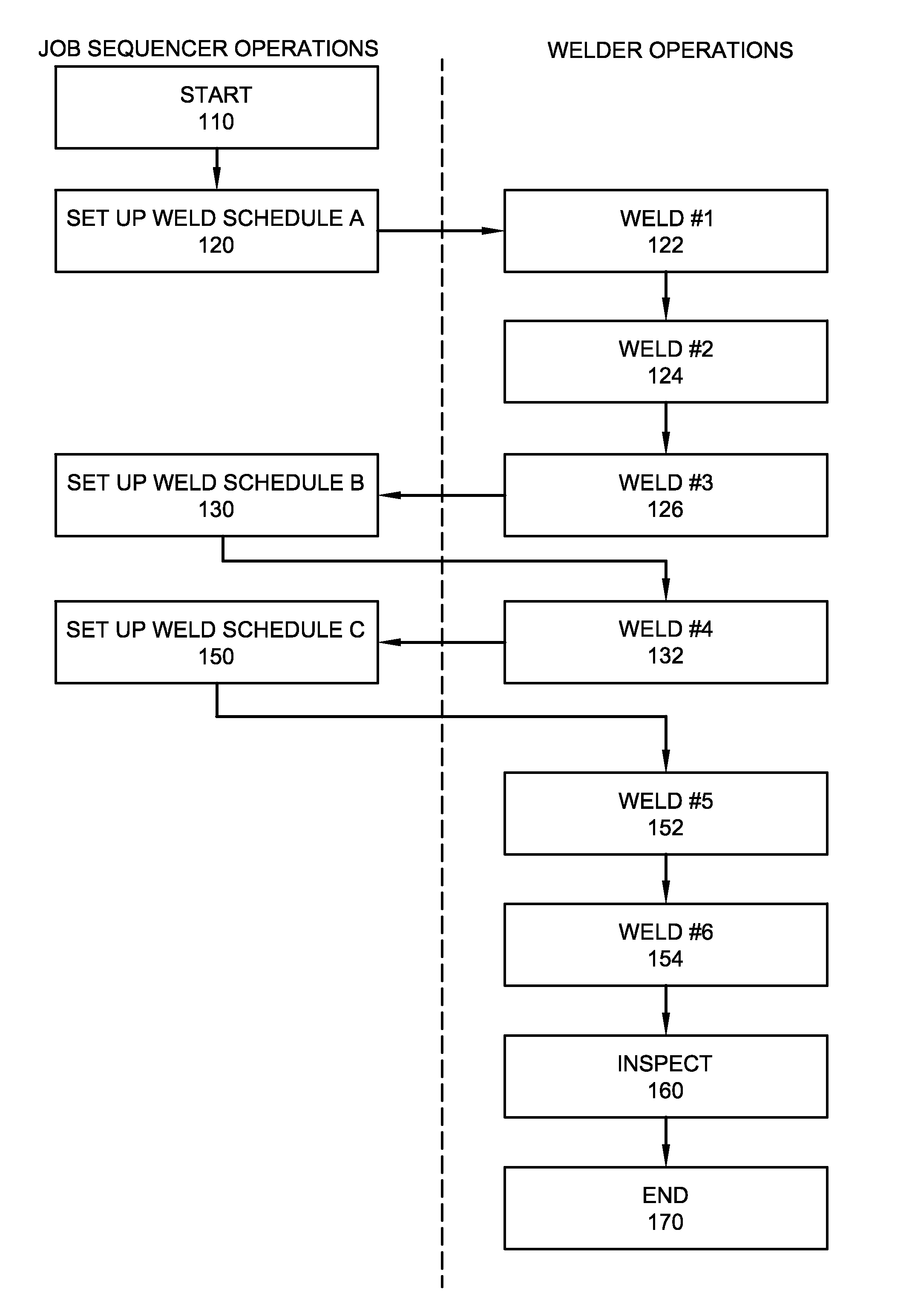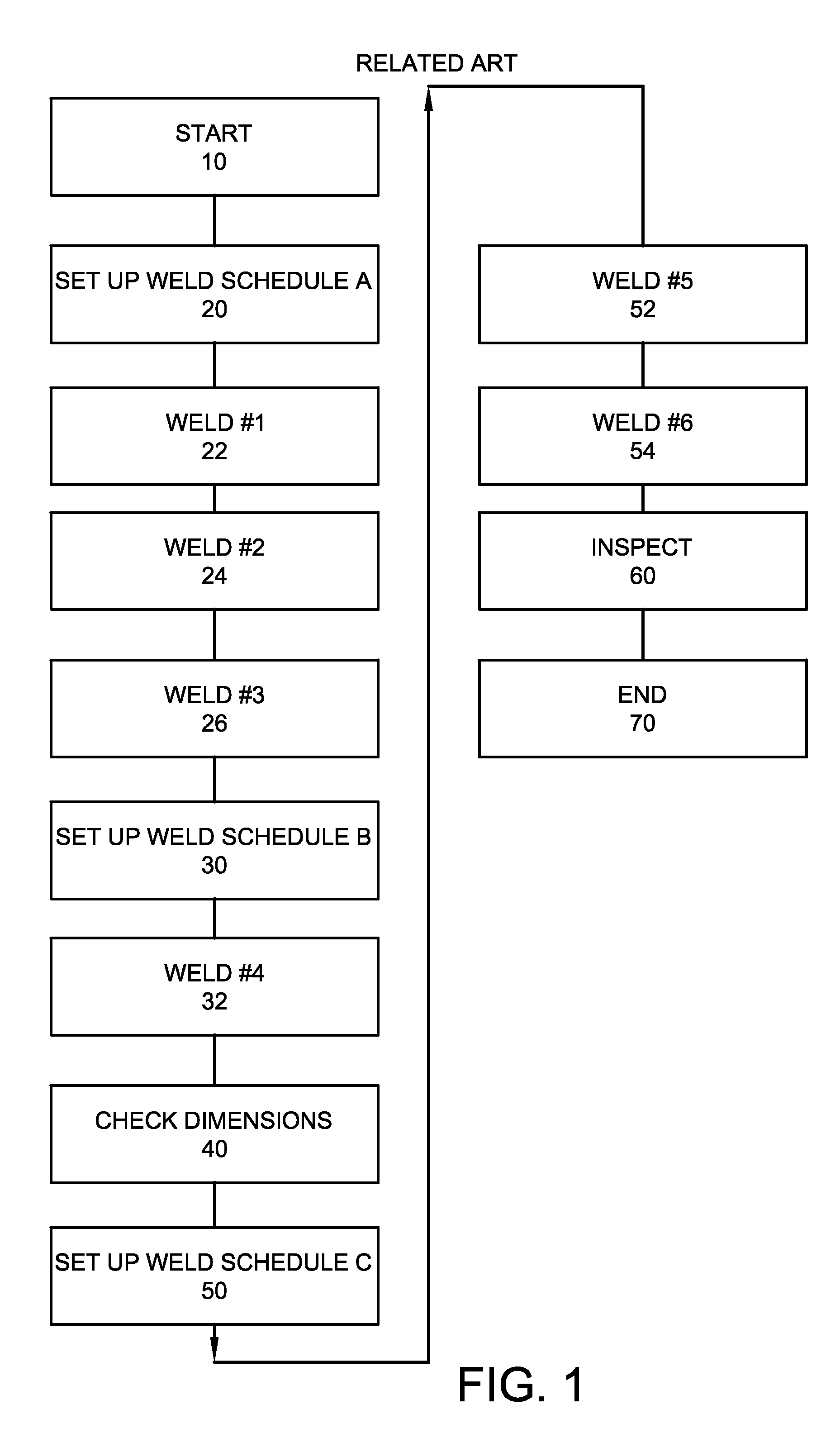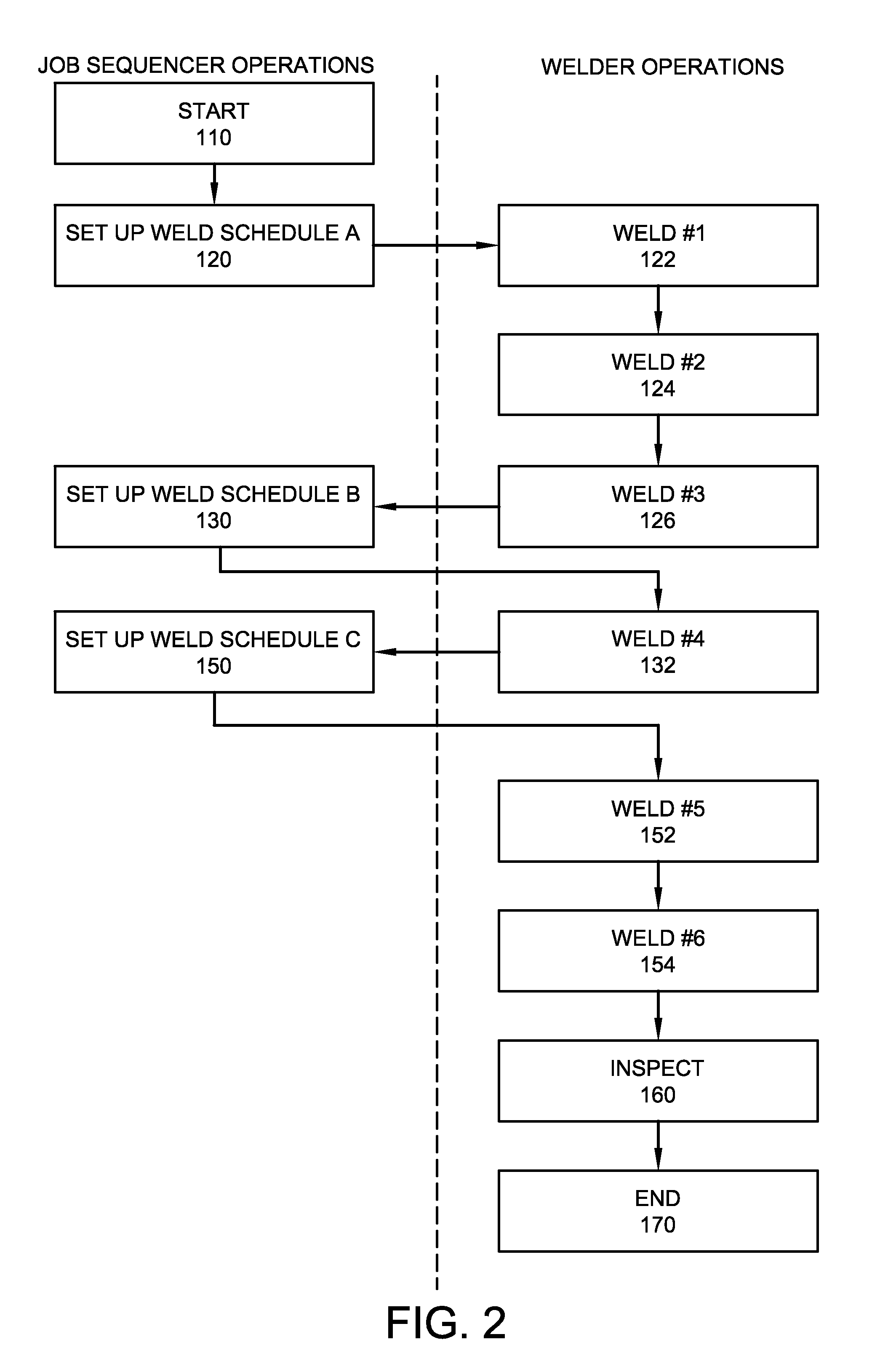System and method of receiving or using data from external sources for a welding sequence
a data source and data technology, applied in the field of welding work cells, can solve the problems of reducing productivity, affecting production efficiency, and affecting production efficiency, and reducing the efficiency of repeating operations
- Summary
- Abstract
- Description
- Claims
- Application Information
AI Technical Summary
Benefits of technology
Problems solved by technology
Method used
Image
Examples
Embodiment Construction
[0029]Embodiments of the invention relate to methods and systems that facilitate performing a welding operation that is controlled in part by a welding sequence. An input component is provided that receives an input from an operator during a performance of a welding operation in which the input allows control of the welding operation or feedback from the welding operation. In an embodiment, the input component is incorporated or affixed to equipment of the operator. In another embodiment, a portable device incorporates the input component, wherein the operator interacts with the portable device to provide the input. An Radio Frequency Identification (RFID) tag is further utilized to control use of a welding sequence based on wireless data communicated between the RFID tag and an RFID component (also referred to as an RFID component).
[0030]According to an aspect of the invention, there is provided a semi-automatic welding work cell including a welding job sequencer that automatically...
PUM
| Property | Measurement | Unit |
|---|---|---|
| Time | aaaaa | aaaaa |
| Pressure | aaaaa | aaaaa |
| Distance | aaaaa | aaaaa |
Abstract
Description
Claims
Application Information
 Login to View More
Login to View More - R&D
- Intellectual Property
- Life Sciences
- Materials
- Tech Scout
- Unparalleled Data Quality
- Higher Quality Content
- 60% Fewer Hallucinations
Browse by: Latest US Patents, China's latest patents, Technical Efficacy Thesaurus, Application Domain, Technology Topic, Popular Technical Reports.
© 2025 PatSnap. All rights reserved.Legal|Privacy policy|Modern Slavery Act Transparency Statement|Sitemap|About US| Contact US: help@patsnap.com



